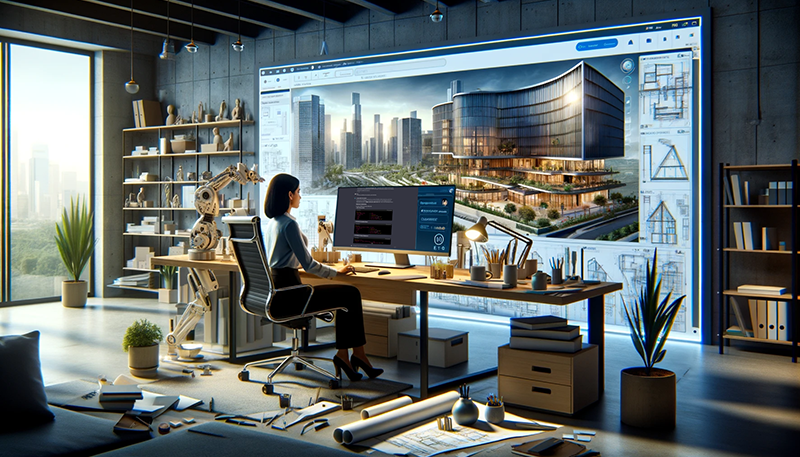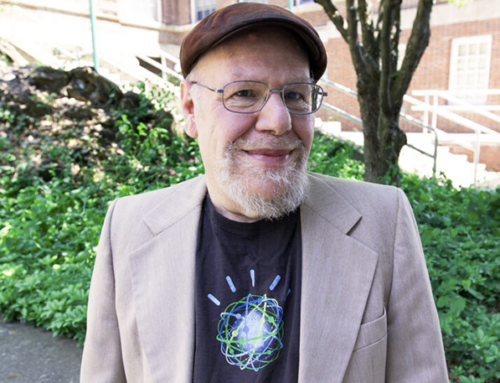Image generated with the use of ChatGPT 4.0.
By Victoria Webb, undergraduate architecture student
Buildings are significant consumers of energy. They account for approximately 34% of global energy usage and 42% of global CO2 emissions. Imagine living in a world where buildings contribute to the planet’s health rather than depleting it. Innovative applications of AI in architecture could help us get there.
Before any concrete is poured or any nails are hammered, architects and designers work through ideas and plans for a building. Determining energy usage and cost is a difficult and complex process that typically utilizes energy modeling programs and consultations with energy specialists.
A significant challenge with this conventional method lies in the fact that energy modeling is both intricate and time-intensive, requiring specialized knowledge. This can result in escalated costs, missed deadlines, and sometimes, the need to compromise on the original design concepts. The process is so complicated that a substantial number of buildings are designed without any specific strategies for energy efficiency.
During my recent residency at the Center for Architecture Science and Ecology (CASE) at RPI in Brooklyn, I began exploring ways to utilize an important new tool to optimize energy modeling: artificial intelligence (AI).
When provided with a dataset of valid energy modeling input files, AI models, and especially large language models (LLMs), we have the capability to synthesize new, customized files. Guided by conversational prompts from the designer, LLMs analyze patterns and examples from the dataset, and the results can be directly utilized in energy modeling software, like Energy+. These tools are reshaping how we approach design, offering new ways to create, iterate, and optimize building models focusing on energy efficiency. By integrating LLMs like ChatGPT, we can enhance the building design process, making it less expensive, more efficient, and more environmentally conscious. Making custom, energy-efficient designs accessible and standard will reduce the whole industry’s carbon footprint.
We explored this goal with the help of CASE Director Dennis Shelden. Our initial attempts were not without hurdles; we found data inconsistencies and incomplete results from the early models. However, custom LLMs allow us to train models with specific, relevant datasets for more accurate and useful outputs.
We’ve started to see promising results. Our LLM now generates comprehensive and practical data for energy modeling software. This development marks a significant step toward integrating AI more deeply into the architectural design process. Facilitated by the generative and building information modeling expertise of the faculty at CASE, the outcomes we have reached in just four short months show true promise and implications for a more sustainable design model.
By reducing the energy consumption of buildings, we can contribute significantly to lowering global carbon emissions. This journey with AI and LLMs in building design is just beginning. We hope to showcase the potential of AI in architecture, and also to light the way for other industries to follow. As we refine these models, the dream of a more energy-efficient world becomes increasingly tangible.




